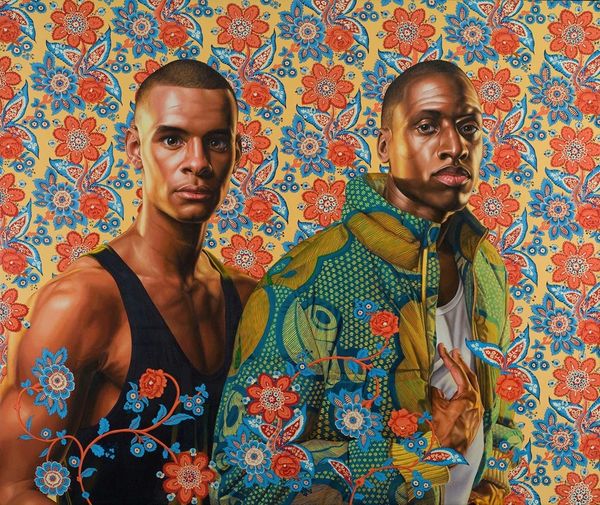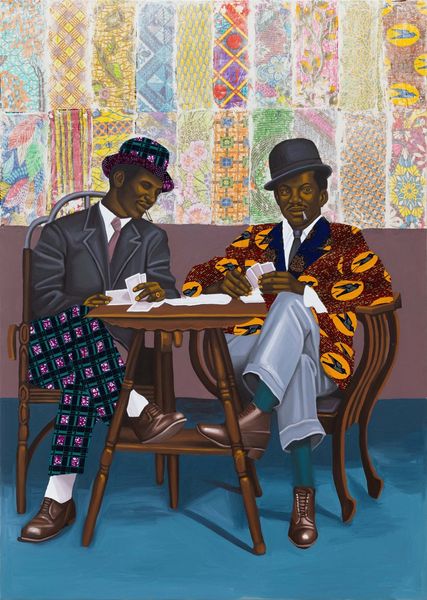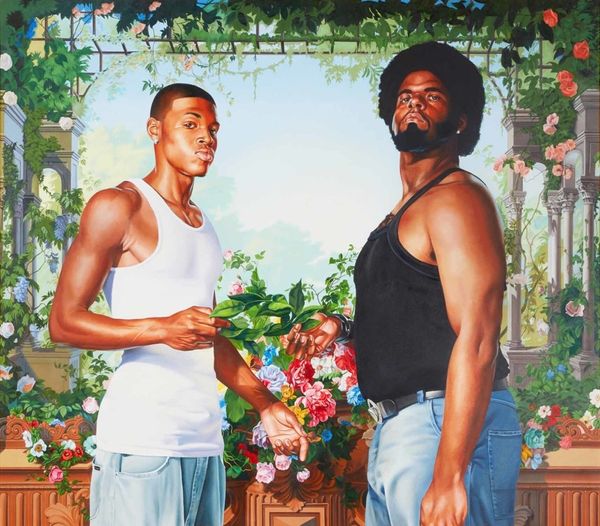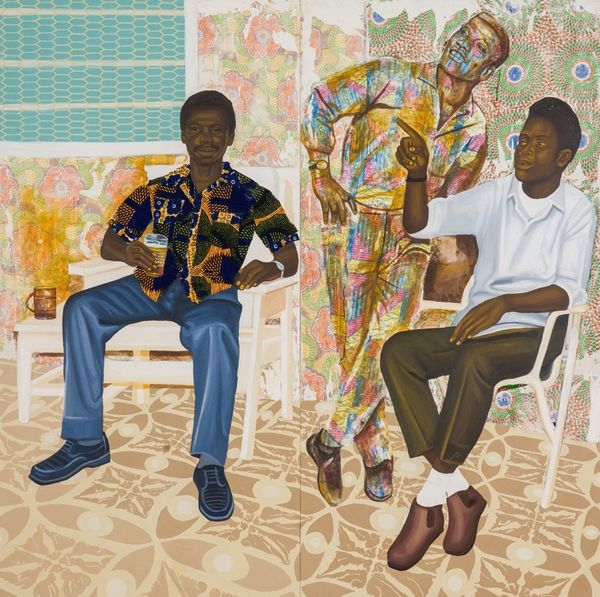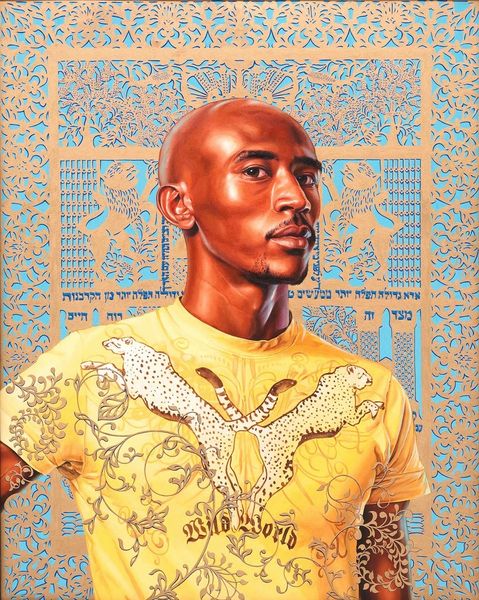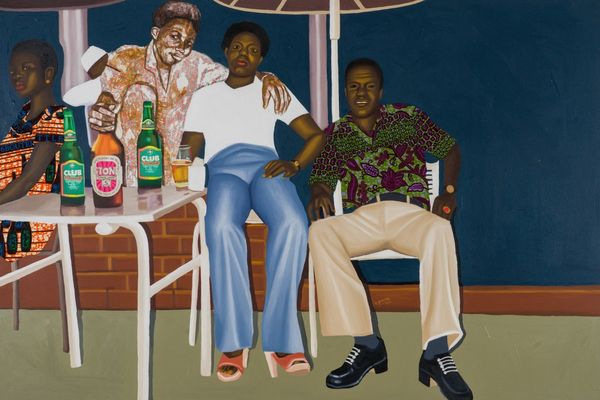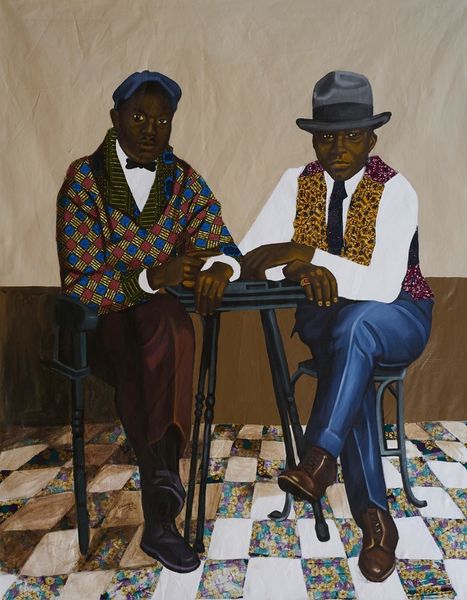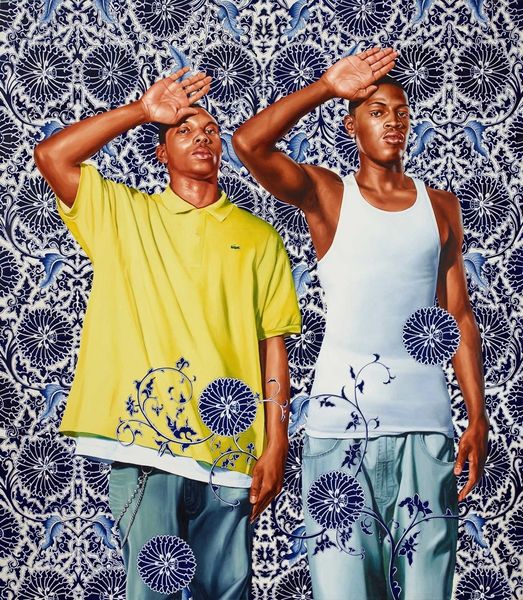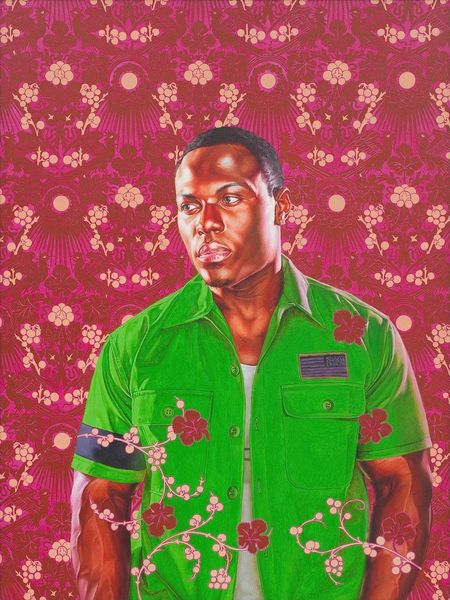
painting, oil-paint
#
portrait
#
pattern-and-decoration
#
figurative
#
contemporary
#
painting
#
colourful composition
#
oil-paint
#
appropriation
#
figuration
#
neo-expressionism
Copyright: Public Domain: Artvee
Editor: Here we have Kehinde Wiley’s "The Tribute Money II" painted in 2012. The work in oil has an immediately striking visual impact. With its vibrant background pattern, and the figures adorned with floral motifs, the painting certainly commands attention. What are some of the initial thoughts that come to mind when you look at this work? Curator: Well, it's impossible to ignore Wiley's appropriation of historical tropes. He directly references Renaissance paintings, specifically Masaccio’s "The Tribute Money" from the Brancacci Chapel, shifting its meaning within a contemporary context. Consider the power dynamics being reimagined here. Who gets to be represented in historically monumental artistic styles? Who is absent? Editor: So you’re saying the location changes the socio-political context and thus its interpretation. How does Wiley negotiate these historical references? Curator: Exactly. Wiley positions young Black men, often styled in contemporary streetwear, within these traditionally white, European art historical settings. The ornate background patterns act almost as a form of "wallpapering" over a loaded historical past. By inserting Black figures into a visual language that historically excluded them, Wiley challenges the established power structures. It also brings attention to contemporary marginalization, and historical exclusion. Think about who typically controls narratives within museum spaces, who is invited to participate? Editor: It seems like Wiley’s work then becomes about institutional critique as well, forcing us to question those very spaces of representation? Curator: Precisely. His use of bright colors and decorative elements makes the work visually appealing but it also subtly hints at the complex histories that often lie beneath the surface of art. This isn’t just aesthetic appeal, it is political engagement. The gaze, the body language - they’re all carefully chosen. It's a commentary on visibility, power, and identity within art history and popular culture. Editor: This has really made me think about who is seen, and who isn't, in the grand narratives of art. Curator: It forces us to reckon with these very issues. And how museums like this one play a role in shaping public understanding of history.
Comments
No comments
Be the first to comment and join the conversation on the ultimate creative platform.


